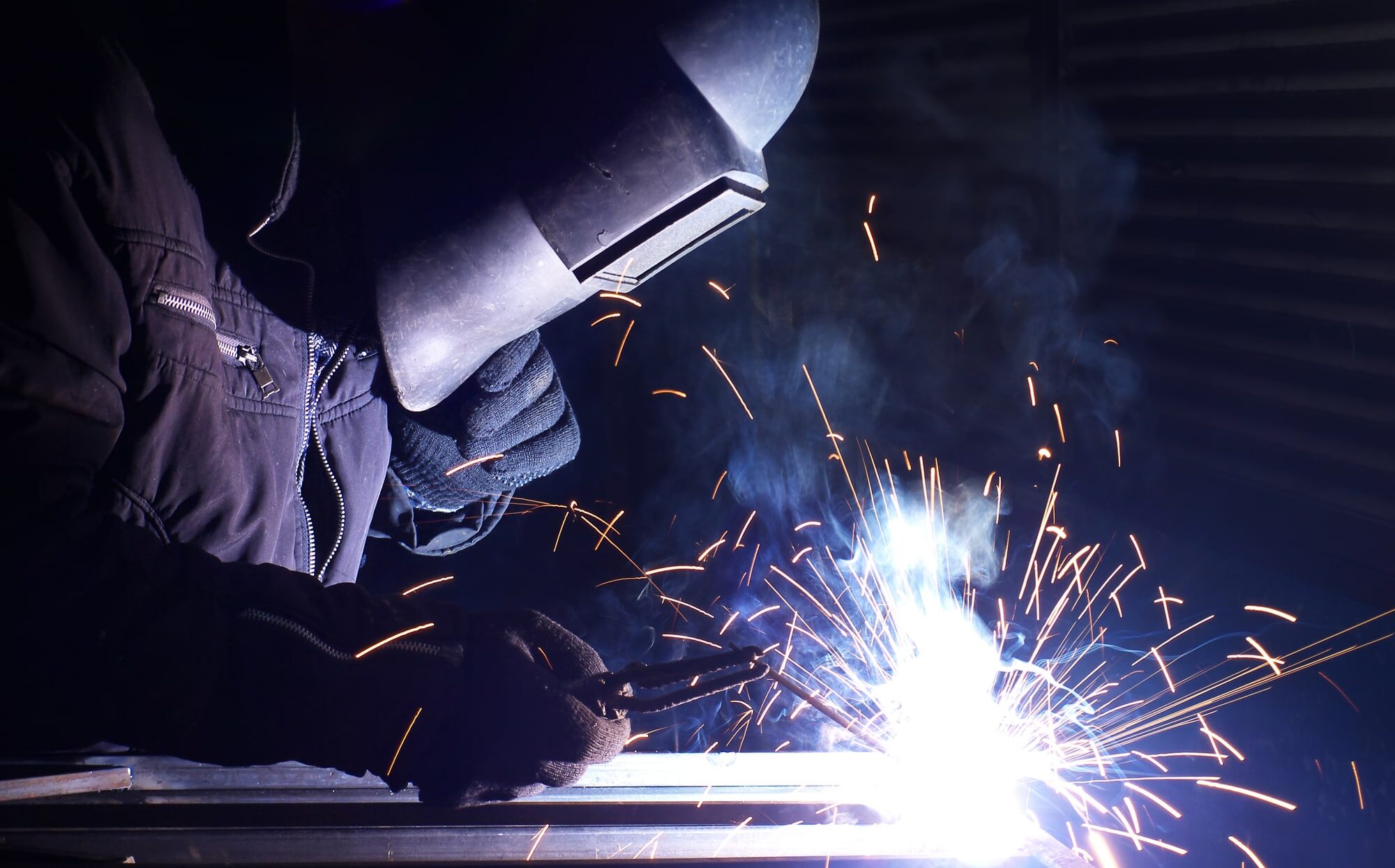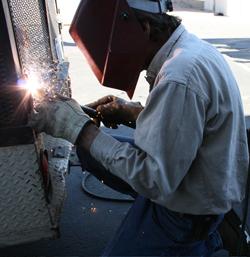Usual Welding Repair Service Issues and How to Address Them Effectively
Welding repairs often run into a series of problems that can threaten the stability of the last product. Common issues consist of inadequate infiltration, porosity, and imbalance, among others. Each flaw presents one-of-a-kind challenges that require certain methods for resolution. Comprehending these problems is vital for welders aiming to improve their outcomes and skills. This conversation will certainly check out these usual welding repair work concerns and efficient approaches to address them.
Insufficient Penetration
Insufficient penetration takes place when the weld steel falls short to fully fuse with the base material, leading to weak joints and prospective architectural failures. This concern frequently comes from insufficient heat input, inaccurate electrode angle, or inappropriate welding speed. Welders might come across insufficient infiltration as a result of a miscalculation of the necessary parameters for a details product thickness or type. Furthermore, contamination on the base material's surface can prevent effective bonding, exacerbating the problem. To deal with insufficient infiltration, welders ought to assure ideal settings on their devices and keep a tidy job surface. Regular evaluation of welds is suggested to identify any kind of shortages early, enabling timely modifications and the prevention of jeopardized structural integrity in welded assemblies.
Porosity
Porosity is a common issue in bonded joints that manifests as small gas bubbles caught within the weld metal. This defect can compromise the stability of the weld, resulting in minimized toughness and potential failure under anxiety. Montana Mobile Welding and Repair Welding. Porosity normally arises from contamination, moisture, or improper welding strategies, which enable gases to leave right into the liquified weld swimming pool. To attend to porosity, welders should assure correct surface area prep work, maintain a tidy workplace, and utilize appropriate welding parameters. Furthermore, picking the appropriate filler material and securing gas can alleviate gas entrapment. Regular assessment and screening of welds can aid determine porosity early, guaranteeing prompt rehabilitative activities are taken, therefore protecting the high quality and dependability of the bonded framework
Imbalance
Imbalance in welding can emerge from numerous factors, including improper setup and thermal expansion. Understanding the source is essential for efficient resolution. A number of correction methods are readily available to straighten components and guarantee architectural integrity.
Reasons of Misalignment
Welding imbalance typically comes from a selection of underlying issues that can compromise structural honesty. One primary cause is incorrect fit-up of parts prior to welding, which can bring about gaps and irregular surfaces. Variants in thermal growth throughout the welding process can also cause distortion, particularly if the products being joined have various coefficients of growth. Furthermore, inadequate securing and fixturing may stop working to hold parts firmly in area, bring about activity throughout welding. Poorly conserved tools, consisting of welding devices and tools, might introduce variances in the weld grain, further contributing to imbalance. Lastly, operator error, originating from inadequate training or experience, can additionally play a substantial duty in creating misaligned welds.
Correction Methods Offered
Dealing with imbalance successfully requires a combination of rehabilitative techniques tailored to the specific concerns available. One usual method is the use of jigs or components to hold parts in the appropriate placement throughout welding, making sure consistent placement. Furthermore, pre-heating the materials can help in reducing distortion and boost fit-up. For considerable misalignment, mechanical adjustment techniques, such as utilizing hydraulic jacks or clamps, can be employed to fix the position prior to welding. Post-weld warm therapy might additionally be required to soothe tensions triggered by imbalance. Mindful evaluation and modification during the arrangement phase can protect against misalignment issues from coming to be significant troubles, promoting a smoother welding procedure and enhancing overall architectural stability.
Distortion
Distortion is an usual obstacle in welding that can occur from various factors, including unequal heating & cooling. Recognizing the root causes of distortion is crucial for implementing efficient avoidance strategies. Resolving this concern not just enhances structural honesty yet also enhances the total quality of the weld.
Root causes of Distortion
When based on the intense warmth of welding, products commonly undergo changes that can result in distortion. This phenomenon mostly arises from thermal expansion and contraction during the welding process. As the weld location warms up, the product broadens; upon air conditioning, it acquires, which can develop internal stresses. Furthermore, irregular heating throughout a work click for more surface can worsen these stresses, leading to warping or bending. The type of material additionally plays a substantial duty; steels with varying thermal conductivity and coefficients of expansion might respond differently, causing unpredictable distortions. Furthermore, inadequate joint layout and inadequate fixturing can add to misalignment during welding, boosting the chance of distortion. Recognizing these reasons is crucial for efficient welding repair and avoidance approaches.
Prevention Techniques
Effective prevention strategies for distortion during welding concentrate on regulating warmth input and making certain correct joint style. Maintaining a regular heat input helps to lessen thermal development and contraction, which can bring about distortion. Using techniques such as preheating the workpiece can likewise reduce the temperature level gradient, promoting uniform home heating. In addition, selecting suitable joint layouts, such as T-joints or lap joints, can boost stability and lower stress focus. Implementing appropriate fixturing to secure the work surfaces in position better help in maintaining positioning throughout the welding procedure. Staggered welding sequences can distribute heat a lot more equally, avoiding localized distortion. By using these strategies, welders can greatly lower the probability of distortion and boost the total high quality of their welds.
Cracking
Cracking is an usual concern run into in welding fixings, typically resulting from different elements such as inappropriate air conditioning rates, product option, or inadequate joint preparation. The occurrence of cracks can substantially jeopardize the honesty of the weld, causing possible failures throughout procedure. To resolve this issue, welders need to initially examine the source, making certain that materials work and suitably chosen for the particular application. Furthermore, controlling the air conditioning rate during the welding procedure is crucial; quick air conditioning can cause anxiety and lead to breaking. Correct joint design and preparation additionally contribute to lessening the threat. Executing these techniques can enhance weld quality and sturdiness, inevitably reducing the possibility of fracturing in completed weldments.

Incomplete Combination
A considerable issue in welding repair work is insufficient fusion, which takes place when the weld metal does not effectively bond with the base product or previous weld passes - Welding. This flaw can result in weak points in the joint, possibly compromising the stability of the welded structure. Aspects adding to insufficient blend consist of insufficient warm input, incorrect welding strategy, and contamination of the surface areas being joined. To resolve this issue properly, welders should assure correct pre-weld cleansing and surface preparation, as well as readjust their welding parameters to achieve ample penetration and blend. Normal assessment throughout the welding procedure can likewise assist recognize insufficient blend early, permitting prompt restorative measures to enhance the total top quality of the weld
Overheating
While welding fixings can boost structural integrity, overheating offers a considerable challenge that can bring about material degradation. Too much warm throughout welding can change the mechanical buildings of steels, leading to minimized strength, increased brittleness, and warping. This sensation is especially essential in high-stress applications where structural dependability is vital. Identifying overheating can involve aesthetic assessments for staining or distortion, along with keeping track of temperature during the welding procedure. To reduce the dangers related to overheating, welders need to anonymous employ proper techniques, such as controlling warm input, adjusting travel rate, and making use of appropriate filler products. In addition, implementing pre- and post-weld warm therapies can help restore product buildings and enhance the general quality of the repair, ensuring long-lasting efficiency and security.
Frequently Asked Concerns
What Are the Common Indications of a Welding Flaw?

Exactly How Can I Check My Welds for Top quality?
To evaluate welds for quality, one can make use of visual assessments, ultrasonic screening, and radiographic methods. Each technique ensures architectural stability, identifies flaws, and validates adherence to defined standards, eventually enhancing the dependability of the welded joints.
What Security Precautions Should I Take While Welding?
When welding, one must focus on security by putting on appropriate individual protective equipment, ensuring appropriate air flow, safeguarding combustible products away, preserving a clean workspace, and knowing environments to avoid injuries and mishaps.
Can I Fix a Weld Without Redoing the Entire Joint?
Repairing a weld without renovating the whole joint is possible, depending on the damage (Belgrade Fabrication). Methods such as grinding, including filler product, or using a welding process can successfully attend to details problems while protecting the bordering framework
What Tools Are Important for Effective Welding Repairs?
Essential tools for reliable welding repairs consist of a welding machine, cord brush, grinder, protective equipment, clamps, and filler materials. Each device plays a crucial role in making sure high quality and security throughout the fixing process. Porosity usually occurs from contamination, wetness, or improper welding methods, which permit gases to leave into the liquified weld swimming pool. Inadequately conserved equipment, consisting of welding equipments and devices, might introduce disparities in imp source the weld grain, more adding to misalignment. When subjected to the extreme warmth of welding, materials usually go through changes that can lead to distortion. Cracking is a common concern run into in welding fixings, commonly resulting from different aspects such as improper cooling rates, material selection, or inadequate joint preparation. A significant problem in welding repair services is insufficient combination, which takes place when the weld metal does not adequately bond with the base product or previous weld passes.